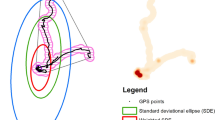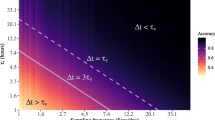Abstract
The trisecting-acting-outcome (TAO) model of three-way decisions includes trisecting a universal set into three separate and closely connected regions, devising, and applying efficient strategies on the three regions, furthermore evaluating the outcome. This paper introduces the proportional utility function (PUF), representing the ratio between an object’s initial and final quantity, to measure the outcomes from two different perspectives for movement-based three-way decision. The first perspective, is that if each object produces the same benefits or costs when they have the same movement (call region-independent), we sum up the three regions’ utility as the overall outcome. The second scenario, is that each object generates a different cost or benefit, even if they have the same movements (call region-dependent). Here, finding an optimal investment plan is an essential matter based on their equivalent classification according to their specific characteristics. For a single equivalence class, we design a strategy to reach the goal under a specific investment, although this investment may be conservative. For all equivalence classes, we give one-time optimal investment plans using PUF based on invested or reserved resources in the movement-based three-way decision. Based on the program, we adopt a series of strategies in action under these investment budgets. The experimental results show that our strategy choices have practical significance and are in line with expected results.









Similar content being viewed by others
Data Availability Statement
All data, models, and code generated or used during the study appear in the submitted article.
References
Yao Y (2009) Three-way decision: an interpretation of rules in rough set theory. In: International Conference on Rough Sets and Knowledge Technology. Springer, pp 642–649
Yao YY (2003) On generalizing rough set theory. In: International Workshop on Rough Sets, Fuzzy Sets, Data Mining, and Granular-Soft Computing. Springer, pp 44–51
Yao Y (2007) A note on definability and approximations. In: Transactions on rough sets VII. Springer, pp 274–282
Yao Y (2010) Three-way decisions with probabilistic rough sets. Inf Sci 180(3):341–353
Yao Y (2012) An outline of a theory of three-way decisions. In: International Conference on Rough Sets and Current Trends in Computing. Springer, pp 1–17
Yao YY (2015) Rough set approximations: a concept analysis point of view. Comput Intell 1:282–296
Yao Y (2019) Tri-level thinking: models of three-way decision. Int J Mach Learn Cybern:1–13
Wang P, Yao Y (2018) Ce3: a three-way clustering method based on mathematical morphology. Knowl-Based Syst 155:54–65
Yu H, Chen L, Yao J, Wang X (2019) A three-way clustering method based on an improved dbscan algorithm. Physica A: Stat Mech Appl 535:122289
Yue XD, Chen YF, Miao DQ, Fujita H (2020) Fuzzy neighborhood covering for three-way classification. Inf Sci 507:795–808
Wang P, Shi H, Yang X, Mi J (2019) Three-way k-means: integrating k-means and three-way decision.
Azam N, Yao J (2014) Analyzing uncertainties of probabilistic rough set regions with game-theoretic rough sets. Int J Approx Reason 55(1):142–155
Azam N, Yao J (2014) Game-theoretic rough sets for recommender systems. Knowl-Based Syst 72:96–107
Yao J, Azam N (2014) Web-based medical decision support systems for three-way medical decision making with game-theoretic rough sets. IEEE Trans Fuzzy Syst 23(1):3–15
Zhang H, Min F (2016) Three-way recommender systems based on random forests. Knowl-Based Syst 91:275–286
Ren R, Wei L (2016) The attribute reductions of three-way concept lattices. Knowl-Based Syst 99:92–102
Qi J, Qian T, Wei L (2016) The connections between three-way and classical concept lattices. Knowl-Based Syst 91:143–151
Qi J, Wei L, Yao Y (2014) Three-way formal concept analysis. In: International Conference on Rough Sets and Knowledge Technology. Springer, pp 732–741
Yao Y, Qi J, Wei L (2018) Formal concept analysis, rough set analysis and granular computing based on three-way decisions. J Northwest Univ (Nat Sci Edn) 48(4):477–487
Yao Y (2017) Interval sets and three-way concept analysis in incomplete contexts. Int J Mach Learn Cybern 8(1):3–20
He X, Wei L, She Y (2018) L-fuzzy concept analysis for three-way decisions: basic definitions and fuzzy inference mechanisms. Int J Mach Learn Cybern 9(11):1857–1867
Deng X, Yao Y (2014) Decision-theoretic three-way approximations of fuzzy sets. Inf Sci 279:702–715
She Y (2014) On determination of thresholds in three-way approximation of many-valued nm-logic. In: International Conference on Rough Sets and Current Trends in Computing. Springer, pp 136–143
Hu M, Yao Y (2019) Structured approximations as a basis for three-way decisions in rough set theory. Knowl-Based Syst 165:92–109
Li J, Huang C, Qi J, Qian Y, Liu W (2017) Three-way cognitive concept learning via multi-granularity. Inf Sci 378:244–263
Li J, Ren Y, Mei C, Qian Y, Yang X (2016) A comparative study of multigranulation rough sets and concept lattices via rule acquisition. Knowl-Based Syst 91:152–164
Shivhare R, Cherukuri A K (2017) Three-way conceptual approach for cognitive memory functionalities. Int J Mach Learn Cybern 8(1):21–34
Subramanian C M, Cherukuri A K, Chelliah C (2018) Role based access control design using three-way formal concept analysis. Int J Mach Learn Cybern 9(11):1807–1837
Wang X, Li J (2018) Three-way decisions, concept lattice and granular computing. Springer
Li J, Mei C, Xu W, Qian Y (2015) Concept learning via granular computing: a cognitive viewpoint. Inf Sci 298:447–467
Jia X, Liao W, Tang Z, Shang L (2013) Minimum cost attribute reduction in decision-theoretic rough set models. Inf Sci 219:151–167
Wang G, Yu H, Li T, et al. (2014) Decision region distribution preservation reduction in decision-theoretic rough set model. Inf Sci 278:614–640
Yao Y, Fu R (2013) The concept of reducts in pawlak three-step rough set analysis. In: Transactions on Rough Sets XVI. Springer, pp 53–72
Yao Y, Zhao Y, Wang J (2008) On reduct construction algorithms. In: Transactions on computational science II. Springer, pp 100–117
Zhang X, Miao D (2014) Reduction target structure-based hierarchical attribute reduction for two-category decision-theoretic rough sets. Inf Sci 277:755–776
Jiang C, Wu J, Li Z (2019) Adaptive thresholds determination for saving cloud energy using three-way decisions. Clust Comput 22(4):8475–8482
Jiang C, Duan Y, Yao J (2019) Resource-utilization-aware task scheduling in cloud platform using three-way clustering. J Intell Fuzzy Syst 37(4):5297–5305
Ciucci D, Dubois D (2013) A map of dependencies among three-valued logics. Inf Sci 250:162–177
Hu B (2014) Three-way decisions space and three-way decisions. Inf Sci 281:21–52
Singh P K (2017) Three-way fuzzy concept lattice representation using neutrosophic set. Int J Mach Learn Cybern 8(1):69–79
Singh P K (2018) Three-way n-valued neutrosophic concept lattice at different granulation. Int J Mach Learn Cybern 9(11):1839–1855
Yao Y (2019) Three-way conflict analysis: Reformulations and extensions of the pawlak model. Knowl-Based Syst 180:26–37
Sun L, Yin T, Ding W, Qian Y, Xu J (2021) Feature selection with missing labels using multilabel fuzzy neighborhood rough sets and maximum relevance minimum redundancy. IEEE Trans Fuzzy Syst
Yao Y (2018) Three-way decision and granular computing. Int J Approx Reason 103:107–123
Yao Y (2020) Three-way granular computing, rough sets, and formal concept analysis. Int J Approx Reason 116:106–125
Gao C, Yao Y (2017) Actionable strategies in three-way decisions. Knowl-Based Syst 133:141–155
Jiang C, Yao Y (2018) Effectiveness measures in movement-based three-way decisions. Knowl-Based Syst 160:136–143
Jiang C, Guo D, Duan Y, Liu Y (2020) Strategy selection under entropy measures in movement-based three-way decision. Int J Approx Reason 119:280–291
Pawlak Z (1982) Rough sets. Int J Comput Inf Sci 11(5):341–356
Pawlak Z (1991) Rough sets: theoretical aspects of reasoning about data. Kluwer Academic Publishers, Boston
Yao Y, Wang S, Deng X (2017) Constructing shadowed sets and three-way approximations of fuzzy sets. Inf Sci 412:132–153
Pedrycz W (1998) Shadowed sets: representing and processing fuzzy sets. IEEE Trans Syst Man Cybern Part B (Cybern) 28(1):103–109
Hu M, Deng X, Yao Y (2019) An application of bayesian confirmation theory for three-way decision. Springer
Hu M, Yao Y (2019) Structured approximations as a basis for three-way decisions in rough set theory. Knowl-Based Syst 165(4):92–109
Zhao X, Hu B (2015) Fuzzy and interval-valued fuzzy decision-theoretic rough set approaches based on fuzzy probability measure. Inf Sci 298:534–554
Yang J, Yao Y (2020) Semantics of soft sets and three-way decision with soft sets. Knowl-Based Syst:105538. https://doi.org/10.1016/j.knosys.2020.105538
Yang X, Li T, Fujita H, Liu D, Yao Y (2017) A unified model of sequential three-way decisions and multilevel incremental processing. Knowl-Based Syst 134:172–188
Li H, Zhou X, Huang B, Liu D (2013) Cost-sensitive three-way decision: a sequential strategy. In: International Conference on Rough Sets and Knowledge Technology. Springer, pp 325–337
Yang X, Li T, Liu D, Fujita H (2019) A temporal-spatial composite sequential approach of three-way granular computing. Inf Sci 486:171–189
Yao Y (2016) Three-way decisions and cognitive computing. Cogn Comput 8(4):543–554
Yao Y (2021) The geometry of three-way decision. Appl Intell:1–28
Zhang X, Gou H, Lv Z, Miao D (2021) Double-quantitative distance measurement and classification learning based on the tri-level granular structure of neighborhood system. Knowl-Based Syst:106799
Todhunter I (1865) A history of the mathematical theory of probability from the time of pascal to that of laplace. Macmillan
Portugal RD, Svaiter B F (2011) Weber-fechner law and the optimality of the logarithmic scale. Mind Mach 21(1):73–81
Dehaene S (2003) The neural basis of the weber–fechner law: a logarithmic mental number line. Trends Cogn Sci 7(4):145–147
Wang S (2017) New explanation on st.petersburg paradox-based on ratio utility theory. J Xi’an Jiaotong Univ (Soc Sci) 37(6):9–17
Sinn H (2003) Weber’s law and the biological evolution of risk preferences: The selective dominance of the logarithmic utility function, 2002 geneva risk lecture. Geneva Papers Risk Insur Theory 28(2):87–100
Acknowledgements
This work was supported in part by Natural Science Foundation of Heilongjiang Provincial (No.LH2020F031) and Postgraduate Innovation Project of Harbin Normal University (HSDSSCX2020-30).
Author information
Authors and Affiliations
Corresponding author
Additional information
Publisher’s note
Springer Nature remains neutral with regard to jurisdictional claims in published maps and institutional affiliations.
Rights and permissions
About this article
Cite this article
Jiang, C., Guo, D. & Xu, R. Measuring the outcome of movement-based three-way decision using proportional utility functions. Appl Intell 51, 8598–8612 (2021). https://doi.org/10.1007/s10489-021-02325-2
Accepted:
Published:
Issue Date:
DOI: https://doi.org/10.1007/s10489-021-02325-2




